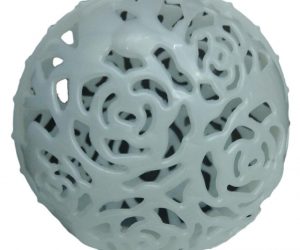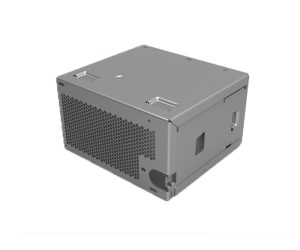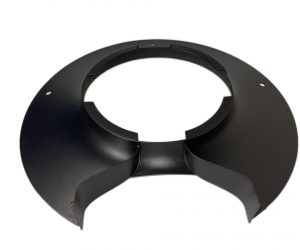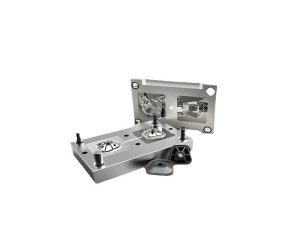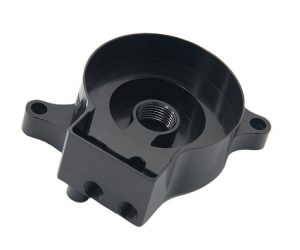The intricate dance of molten polymer, channeled and constrained, defines the success or failure of injection molding. Central to this choreography is the runner system, a seemingly simple network of conduits that dictates material flow, cycle time, and ultimately, profitability. Far from a mere afterthought, the runner system's selection represents a critical juncture in the design process, demanding a nuanced understanding of its multifaceted implications.
The venerable cold runner system, while seemingly rudimentary in its isothermal operation, remains a stalwart in the industry. Its simplicity translates to lower upfront costs, making it a pragmatic choice for low-to-medium volume production runs and less demanding part geometries. However, this simplicity comes at a cost: the inherent generation of sprue and runner waste, a significant contributor to material expenditure and environmental concerns. The subsequent reprocessing of this waste introduces further complexities, potentially compromising material integrity and adding to overall production time. Furthermore, the thermal gradients inherent in this system can introduce unpredictable variations in part quality, especially with sensitive materials.
The hot runner system, a sophisticated counterpoint, elegantly circumvents the limitations of its cold-runner predecessor. By maintaining the runners at a precisely controlled elevated temperature, it eliminates the wasteful solidification of material between injection cycles. This results in significant material savings, accelerated cycle times, and the potential for enhanced part consistency. However, this technological advancement demands a substantial initial investment, necessitating a high-volume production environment to justify its implementation. Furthermore, the intricate thermal management and precise temperature control required introduce complexities in maintenance and repair, potentially leading to costly downtime. The choice, therefore, hinges on a delicate balance between long-term cost savings and upfront capital expenditure.
Further refinement is achieved through insulated runner systems, which, by strategically employing thermal insulation, minimize energy consumption and enhance thermal stability. This translates to improved part consistency and reduced energy costs, but adds another layer of design complexity and potential points of failure.
The valve gate system, a specialized subset of hot runner technology, introduces an element of precision control previously unattainable. Through the precise manipulation of individual gates, it allows for optimized filling of complex cavities, minimizing weld lines and gate vestige – crucial for aesthetically demanding applications. This control, however, necessitates a more sophisticated and expensive system, demanding a higher level of expertise in both design and maintenance.
Sequential valve gating, pushing the boundaries of control even further, orchestrates the filling of multiple cavities in a precisely timed sequence. This sophisticated approach mitigates internal stresses in large or complex parts, resulting in improved dimensional accuracy and reduced warpage. However, the complexity of design, control, and maintenance escalates proportionally, demanding a high level of engineering expertise and significant capital investment.
The selection of the optimal runner system transcends simple cost analysis; it requires a holistic assessment of part design intricacies, material properties, production volume projections, and the desired level of part quality. A collaborative approach, involving experienced mold designers and material specialists, is paramount in navigating the complex interplay of these factors and ensuring the selection of a runner system that aligns seamlessly with the overall manufacturing strategy. The ultimate goal is not merely to produce parts, but to optimize the entire process for maximum efficiency and profitability.
The injection molding process, a cornerstone of modern manufacturing, transcends mere material manipulation; it's a complex interplay of thermodynamic forces, rheological properties, and geometric constraints. The seemingly simple act of injecting molten polymer into a mold cavity belies a profound engineering challenge, one profoundly impacted by the often-overlooked, yet critically important, gating system. This system, far from a passive conduit, dictates the very essence of the final product, influencing its structural integrity, aesthetic appeal, and ultimately, its economic viability.
The gate, the nexus of polymer flow, is not merely a hole; it's a meticulously engineered microfluidic device. Its design, a delicate balance between minimizing shear stresses, preventing premature solidification, and ensuring complete cavity fill, directly impacts the resulting part's quality. A poorly conceived gate can lead to a cascade of failures: short shots, weld lines that compromise structural integrity, sink marks that mar the surface, and trapped volatiles that compromise material properties.
Traditional gating systems, while seemingly straightforward, present a rich tapestry of complexities. The ubiquitous sprue gate, while simple in design, often results in pronounced weld lines and air entrapment, a consequence of the abrupt change in flow direction. Side gates, attempting to mitigate these issues by introducing the melt tangentially, introduce their own set of challenges: uneven filling, potential for flow instabilities, and increased susceptibility to flash. The seemingly elegant point gate, with its focused injection, can suffer from similar filling inconsistencies, particularly in complex geometries. Even the ring gate, with its ostensibly uniform melt distribution, can succumb to the capricious nature of polymer flow, prone to premature solidification and incomplete filling in intricate designs.
The advent of hot runner systems, while representing a significant advancement, introduces a new layer of complexity. While eliminating the need for sprues and runners, thus reducing material waste and cycle times, these systems demand precise temperature control, intricate manifold design, and specialized maintenance, significantly increasing capital investment and operational overhead. The selection of a hot runner system requires a sophisticated understanding of polymer rheology, mold design, and thermal management. Failure to account for these factors can lead to premature component failure, costly downtime, and compromised product quality.
The optimal gate selection isn't a simple matter of choosing the "best" option; it's a nuanced decision-making process, a delicate dance between competing priorities. Part geometry, polymer viscosity, processing parameters (injection pressure, melt temperature, mold temperature), and production volume all play crucial roles. A comprehensive finite element analysis (FEA) often proves indispensable, allowing for the prediction of flow patterns, pressure distributions, and potential defects before committing to a specific design. The choice, therefore, transcends simple heuristics; it demands a deep understanding of fluid mechanics, materials science, and manufacturing engineering. The seemingly insignificant gate, then, reveals itself as a critical determinant of success or failure in the intricate world of injection molding.
What are runners in injection molding?
Runners are the channels that connect the injection unit to the mold cavity. They allow the molten material to flow from the nozzle of the injection machine to the gate of the mold cavity. The gate is the point where the material enters the mold cavity and forms the part.
Runners can have different shapes, sizes, and configurations, depending on the part design and mold layout. The most common shapes are circular, trapezoidal, and rectangular. The size of the runner affects the pressure drop, flow rate, and cooling time of the material. The configuration of the runner depends on the number and location of the cavities in the mold. The most common configurations are single-cavity, multi-cavity, and family molds.
Runners are usually classified into two main types: cold runners and hot runners. Cold runners are made of the same material as the part and solidify after each injection cycle. Hot runners are heated by an external source and keep the material in a molten state throughout the process. There is also a third type of runner called insulated runner, which is a hybrid between cold and hot runners.
Types of runners in injection molding
Cold runners
Cold runners are the simplest and most common type of runners in injection molding. They are made of the same material as the part and solidify after each injection cycle. They have to be separated from the part manually or automatically and either reused or discarded.
The main advantages of cold runners are:
- They are easy to design and manufacture.
- They are compatible with most materials and mold designs.
- They do not require additional heating or cooling equipment.
- They reduce material waste and energy consumption.
The main disadvantages of cold runners are:
- They increase cycle time and labor cost due to the need to remove and handle them.
- They reduce part quality due to potential defects such as weld lines, sink marks, and jetting.
- They limit design flexibility due to geometric constraints and pressure loss.
Hot runners
Hot runners are a type of runners that are heated by an external source and keep the material in a molten state throughout the process. They do not solidify after each injection cycle and do not need to be separated from the part. They consist of two main components: a manifold and a nozzle. The manifold distributes the material from the injection unit to multiple nozzles that feed each cavity. The nozzles can have different types of gates such as edge gate, pin gate, valve gate, or fan gate.
The main advantages of hot runners are:
- They eliminate cycle time and labor cost associated with cold runners.
- They improve part quality by reducing defects such as weld lines, sink marks, and jetting.
- They increase design flexibility by allowing complex geometries and large parts.
- They reduce material waste and energy consumption by eliminating cold runner scrap.
The main disadvantages of hot runners are:
- They are more expensive and complex to design and manufacture.
- They require additional heating and cooling equipment and maintenance.
- They are not compatible with some materials that are sensitive to thermal degradation or contamination.
- They can cause thermal expansion and contraction issues that affect mold alignment and dimensional accuracy.
Insulated runners
Insulated runners are a type of runners that are made of a thermally insulating material that prevents heat transfer from the molten material to the mold. They act as a buffer between cold and hot runners, keeping the material at a temperature close to its melting point. They solidify partially after each injection cycle but do not need to be separated from the part.
The main advantages of insulated runners are:
- They combine some benefits of both cold and hot runners.
- They reduce cycle time and labor cost compared to cold runners.
- They improve part quality compared to cold runners.
- They reduce material waste and energy consumption compared to hot runners.
The main disadvantages of insulated runners are:
- They are more difficult to design and manufacture than cold runners.
- They require special materials and mold coatings that are thermally insulating and wear-resistant.
- They are not suitable for some materials that have a narrow processing window or high viscosity.
- They can cause material degradation and color change due to prolonged exposure to heat.
How to choose the best runner type for your project
Choosing the best runner type for your project depends on several factors, such as:
- Part design: The shape, size, and complexity of the part affect the choice of runner type. For example, cold runners are more suitable for simple and small parts, while hot runners are more suitable for complex and large parts.
- Material properties: The type, grade, and color of the material affect the choice of runner type. For example, hot runners are more suitable for materials that have a high melting point, low viscosity, and high thermal stability, while cold runners are more suitable for materials that have a low melting point, high viscosity, and low thermal stability.
- Production requirements: The quantity, quality, and cost of the production affect the choice of runner type. For example, hot runners are more suitable for high-volume, high-quality, and low-cost production, while cold runners are more suitable for low-volume, low-quality, and high-cost production.
Conclusion
Runners are an important component of injection molding, as they affect the quality, efficiency, and cost of the process. Different types of runners have different advantages and disadvantages, depending on the part design, material properties, and production requirements. Choosing the best runner type for your project requires a careful analysis of these factors and a trade-off between them. In general, cold runners are more suitable for simple, small, and low-volume parts made of low-melting-point, high-viscosity, and low-thermal-stability materials. Hot runners are more suitable for complex, large, and high-volume parts made of high-melting-point, low-viscosity, and high-thermal-stability materials. Insulated runners are a hybrid between cold and hot runners that combine some benefits of both types.
